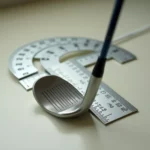Golf is a sport filled with unique terminology and concepts that can sometimes sound like a foreign language to newcomers. One such term that frequently floats around the green is G.I.R., which stands for Greens in Regulation. In this guide, we’re going to unpack what G.I.R. means, why it matters in your game, and how you can improve your chances of achieving it.
What is G.I.R.?
Greens in Regulation is a statistical measure used in golf to indicate how many times a player has hit the green in the regulation number of strokes. The regulation number is defined as follows:
- For Par 3 holes: Reach the green in 1 stroke
- For Par 4 holes: Reach the green in 2 strokes
- For Par 5 holes: Reach the green in 3 strokes
Why is G.I.R. Important?
Achieving a high G.I.R. percentage is essential for several reasons:
- Scoring Easier: Hitting the green in regulation gives golfers a better opportunity for birdies and pars.
- Statistical Benchmark: It serves as a benchmark for golfers to assess their performance. The higher the G.I.R. percentage, the more confident a golfer can feel about their iron and approach shots.
- Strategy Development: Understanding G.I.R. helps players develop strategies for different courses.
 Golf Course Aerial View
Golf Course Aerial View
How is G.I.R. Calculated?
Calculating your G.I.R. is straightforward. Simply take the number of greens you successfully hit in regulation and divide by the total number of chances you had to hit the green during a round, then multiply by 100 to convert it to a percentage.
G.I.R. Formula:
[
text{G.I.R. Percentage} = left(frac{text{Number of Greens in Regulation}}{text{Total Holes Played}} right) times 100
]
For example, if you played a round with 18 holes and hit 10 greens in regulation, your G.I.R. percentage would be:
[
text{G.I.R. Percentage} = left(frac{10}{18}right) times 100 approx 55.56%
]
Factors Affecting G.I.R.
Several factors can impact your ability to hit greens in regulation:
- Club Selection: Choosing the right clubs for your approach shots can significantly influence your G.I.R.
- Course Conditions: Fast greens, pin locations, and wind can all affect how well you hit greens.
- Shot Accuracy: Being precise with your shots is key, especially with mid and short irons.
- Skill Level: A player’s overall golfing skill will also dictate how consistently they hit greens in regulation.
 Golfer Selecting Club from Bag
Golfer Selecting Club from Bag
Improving Your G.I.R.
Increasing your G.I.R. percentage involves honing various aspects of your golf game. Here are several actionable tips to help you achieve this:
Practice Your Approach Shots
- Regularly practice your approach shots from various distances.
- Use a launch monitor to analyze your shot data.
Work on Your Course Management
- Assess the hole layout before hitting your approach shot.
- Aim for larger areas of the green if pin location is tricky.
Improve Your Short Game
- Practice chipping and putting to increase your confidence if you miss a G.I.R.
Build Consistency
- Focus on developing a consistent swing for your iron shots.
- Create a pre-shot routine to help with focus and visualization.
Get Professional Instruction
- Consider taking lessons from a certified golf instructor to identify parts of your game needing improvement.
 Golfer Practicing Approach Shots at Driving Range
Golfer Practicing Approach Shots at Driving Range
The Relationship Between G.I.R. and Scoring
It’s no secret that hitting greens in regulation often leads to better scoring. A study by the PGA Tour indicates that players who average over 60% G.I.R. typically score in the low 70s.
G.I.R. Categories by Skill Level
| Skill Level | Average G.I.R. Percentage |
|---|---|
| Beginner | 30% – 40% |
| Intermediate | 40% – 60% |
| Advanced | 60% – 70% |
| Professional | 70% and above |
G.I.R. Statistics and Trends
In recent years, the emphasis on statistics in golf has increased. Understanding G.I.R. statistics enables players to scrutinize their performance on the course better. The PGA and other golf organizations routinely emphasize G.I.R. stats as a key performance indicator for professional golfers.
Common G.I.R. Metrics
- G.I.R. Percentage: Percentage of greens hit in regulation.
- Eagle Opportunities: Number of holes where G.I.R. could lead to an eagle (going 2 under par).
- Birdie Opportunities: Number of holes where G.I.R. leads to a probable birdie chance.
 Golf Scorecard and Pencil
Golf Scorecard and Pencil
Key Takeaways
- G.I.R. is a crucial statistic in golf that determines how often a player hits the green in the regulation number of strokes.
- Calculating your G.I.R. is simple and can provide valuable insights into your performance.
- Improving G.I.R. is achievable through focused practice, better course management, and a consistent swing.
- Understanding and tracking G.I.R. can help golfers of all skill levels enhance their game and improve their overall scores.
FAQs about G.I.R.
1. What does G.I.R. stand for?
G.I.R. stands for Greens in Regulation.
2. How do I calculate my G.I.R. percentage?
Take the number of greens you hit in regulation and divide it by the total holes you played, then multiply by 100.
3. Why is achieving a high G.I.R. percentage important?
A high G.I.R. percentage indicates that you’re hitting good approach shots, which leads to better scoring opportunities.
4. What factors influence my G.I.R.?
Factors include club selection, course conditions, shot accuracy, and your overall skill level.
5. Can I improve my G.I.R.?
Yes! Regular practice, improving your short game, strategy development, and seeking professional guidance can all contribute to enhancing your G.I.R.
6. What G.I.R. percentage should I aim for?
Beginners should aim for 30% – 40%, while advanced players should strive for 60% and above.
7. Is G.I.R. the only important statistic in golf?
While G.I.R. is vital, other statistics like putting and driving accuracy also contribute significantly to your game.
8. How does G.I.R. relate to overall golf performance?
Higher G.I.R. percentages often correlate with lower scores, making it an essential statistic to monitor.
9. What types of clubs are most effective for improving G.I.R.?
Mid and short irons are often most effective, as they’re commonly used for approach shots.
10. Where can I find more information about G.I.R. in golf?
For more detailed insights, consider checking out resources from the PGA Tour or seeking instructional books from professional golfers.
Understanding and improving your Greens in Regulation can transform your golf game. With practice and a strategic approach, you can enhance your abilities and enjoy your time on the course even more. Keep swinging and aiming for those greens!

